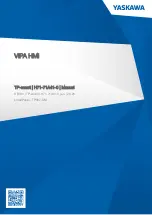
B-79
INST
ALLA
TION PROCEDURE
CEILING-CONCEALED
S series
CEILING-
CONCEALED
6. Refrigerant piping work
6.5. Drain piping work
• Ensure that the drain piping is downward (pitch of more than 1/100) to the outdoor
(discharge) side. Do not provide any trap or irregularity on the way. (
)
• Ensure that any cross-wise drain piping is less than 20 m (excluding the difference
of elevation). If the drain piping is long, provide metal braces to prevent it from
waving. Never provide any air vent pipe. Otherwise drain may be ejected.
• Use a hard vinyl chloride pipe O.D. ø32 for drain piping.
• Ensure that collected pipes are 10 cm lower than the unit body’s drain port as
shown in
.
• Do not provide any odor trap at the drain discharge port.
• Put the end of the drain piping in a position where no odor is generated.
• Do not put the end of the drain piping in any drain where ionic gases are generated.
[Fig. 6-10]
Downward slope 1/100 or more
Connection dia. R1 external thread
Indoor unit
Collective piping
Maximize this length to approx. 10 cm
1.Insert the drain hose (accessory) into the drain port.
(The drain hose must not be bent more than 45 to prevent the hose from breaking
or clogging.)
The connecting part between the indoor unit and the drain hose may be discon-
nected at the maintenance. Fix the part with the accessory band, not be adhered.
2.Attach the drain pipe (O.D. ø32 PVC TUBE, field supply).
(Attach the pipe with glue for the hard vinyl chloride pipe, and fix it with the band
(small, accessory).)
3.Perform insulation work on the drain pipe (O.D. ø32 PVC TUBE) and on the socket
(including elbow).
[Fig. 6-11]
Indoor unit
Pipe cover (short) (accessory)
Tie band (accessory)
Band fixing part
Insertion margin
Drain hose (accessory)
Drain pipe (O.D. ø32 PVC TUBE, field supply)
Insulating material (field supply)
Max.145
$
5 mm
1.Remove and discard the rubber bung which is inserted in the end of the unit piping.
2.Flare the end of the site refrigerant piping.
3.Pull out the thermal insulation on the site refrigerant piping and replace the insula-
tion in its original position.
Cautions On Refrigerant Piping
Be sure to use non-oxidative brazing for brazing to ensure that no foreign
matter or moisture enter into the pipe.
Be sure to apply refrigerating machine oil over the flare connection seating
surface and tighten the connection using a double spanner.
Provide a metal brace to support the refrigerant pipe so that no load is
imparted to the indoor unit end pipe. This metal brace should be provided
50 cm away from the indoor unit’s flare connection.
6.4. Purging procedures leak test
PURGING PROCEDURES
Connect the refrigerant pipes (both the liquid and gas pipes) between the indoor
and the outdoor units.
Remove the service port cap of the stop valve on the side of the outdoor unit gas pipe.
(The stop valve will not work in its initial state fresh out of the factory (totally closed
with cap on).)
Connect the gage manifold valve and the vacuum pump to the service port of the
stop valve on the gas pipe side of the outdoor unit.
Run the vacuum pump. (Vacuumize for more than 15 minutes.)
Check the vacuum with the gage manifold valve, then close the gage manifold valve,
and stop the vacuum pump.
Leave it as is for one or two minutes. Make sure the pointer of the gage manifold
valve remains in the same position. Confirm that the pressure gage show -0.101MPa
(-760 mmHg).
*Close
*Open
Hexagonal wrench
Stop valve
*4 to 5 turns
Stop valve
(or the vacuum
pump with the
function to
prevent the back
flow)
Gauge manifold
valve (for R410A)
Pressure gauge
(for R410A)
Compound pressure
gauge (for R410A)
-0.101MPa
(-760 mmHg)
Handle
Low
Handle High
Window
Charge hose
(for R410A)
Vacuum
pump
Adapter for
preventing
the back flow
Charge hose
(for R410A)
Service port
Stop
valve
Remove the gage manifold valve quickly from the service port of the stop valve.
After refrigerant pipes are connected and evacuated, fully open all stop valves on
gas and liquid pipe sides.
Operating without fully opening lowers the performance and causes trouble.
7. Duct work
• When connecting ducts, insert a canvas duct between the main body and the duct.
• Use non-combustible duct components.
Caution:
•
The noise from the intake will increase dramatically if intake
is fitted
directly beneath the main body. Intake
should therefore be installed as
far away from the main body as possible.
Particular care is required when using it with bottom inlet specifications.
•
Install sufficient thermal insulation to prevent condensation forming on
outlet duct flanges and outlet ducts.
•
To connect the air conditioner main body and the duct for potential equali-
zation.
•
Keep the distance between the inlet grille and the fan over 850 mm.
If it is less than 850 mm, install a safety guard not to touch the fan.
[Fig. 7-1]
Air inlet
Air outlet
Access door
Ceiling surface
Canvas duct
Air filter
Inlet grille
Pipe length :
7 m maximum
No gas charge is needed.
Pipe length exceeding 7 m
Charge the prescribed
amount of gas.
Tighten the cap to the service port to obtain the initial status.
Retighten the cap
Leak test
















































